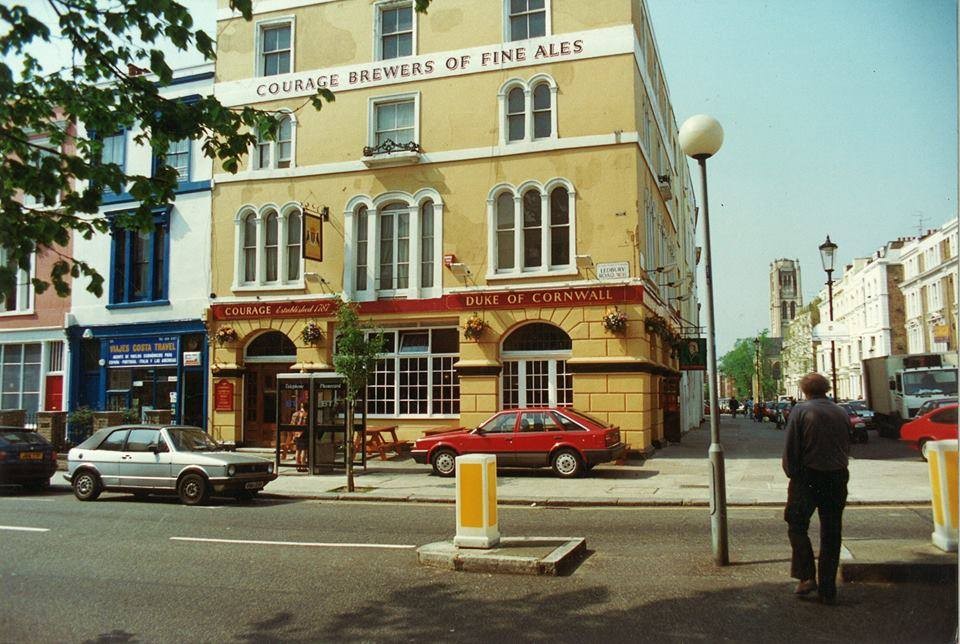
Chepstow Villas, W11
Road in/near Notting Hill, existing between the 1850s and now.
 | Chepstow Villas, W11 Road in/near Notting Hill, existing between the 1850s and now. |
| HOME | · | ARTICLE | · | MAPS | · | STREETS | · | BLOG | · | CONTACT US |
| MAP YEAR: | 1750 | 1800 | 1810 | 1820 | 1830 | 1860 | 1900 | 1950 | 2024 | Show map without markers |
| Use the control in the top right of the map above to view this area on another historic map | ||||||||||
| Main source: | Ladbroke Association |
| Further citations and sources |
| Click here to explore another London street We now have 666 completed street histories and 46834 partial histories Find streets or residential blocks within the M25 by clicking STREETS |
| CONTRIBUTIONS TO THE LOCALITY |
  EMC Added: 10 Jul 2023 22:35 GMT | Ossington Street, W8 correcting the date on my existing comment Source: Paddington: Bayswater | British History Online Reply |
  Ken Herlingshaw Added: 17 Jun 2023 18:34 GMT | St John the Evangelist - Spire The top of the church spire fell off during WW2 (presumably during a bombing raid ?) and for many years after that the spire had a flat top. I don’t know when it was restored. Definitely not in the early fifties when I went to Sunday School there. Reply |
  EMC Added: 10 Jul 2023 22:31 GMT | Correction re Ossington Street In the Wikipedia date of 1837 for the renaming of Victoria Grove as Ossington Street, the two last figures appear to have been transposed from the likely source, London County Council, Names of Streets (1905) quoted in T F T Baker, Diane K Bolton and Patricia E C Croot, ’Paddington: Bayswater’, in A History of the County of Middlesex: Volume 9, Hampstead, Paddington, ed. C R Elrington (London, 1989), pp. 204-212. British History Online ptth;:’www.british-history.ac.uk/vch/middx/vol9/pp204-212 [accessed 10 July 2023]. "During the 1830s Victoria Grove (renamed Ossington Street in 1873) (fn. 48) was laid out from the Uxbridge road close to the boundary, on part of Gravel Pit field." This makes sense, as John Evelyn Denison, a former Speaker of the House of Commons, was created 1st Viscount Ossington in 1873. Source: Paddington: Bayswater | British History Online Reply |
| LATEST LONDON-WIDE CONTRIBUTIONS TO THE PROJECT |
  Tony Whipple Added: 16 Apr 2024 21:35 GMT | Frank Whipple Place, E14 Frank was my great-uncle, I’d often be ’babysat’ by Peggy while Nan and Dad went to the pub. Peggy was a marvel, so full of life. My Dad and Frank didn’t agree on most politics but everyone in the family is proud of him. A genuinely nice, knowledgable bloke. One of a kind. Reply |
  Theresa Penney Added: 16 Apr 2024 18:08 GMT | 1 Whites Row My 2 x great grandparents and his family lived here according to the 1841 census. They were Dutch Ashkenazi Jews born in Amsterdam at the beginning of the 19th century but all their children were born in Spitalfields. Reply |
  Wendy Added: 22 Mar 2024 15:33 GMT | Polygon Buildings Following the demolition of the Polygon, and prior to the construction of Oakshott Court in 1974, 4 tenement type blocks of flats were built on the site at Clarendon Sq/Phoenix Rd called Polygon Buildings. These were primarily for people working for the Midland Railway and subsequently British Rail. My family lived for 5 years in Block C in the 1950s. It seems that very few photos exist of these buildings. Reply |
  Steve Added: 19 Mar 2024 08:42 GMT | Road construction and houses completed New Charleville Circus road layout shown on Stanford’s Library Map Of London And Its Suburbs 1879 with access via West Hill only. Plans showing street numbering were recorded in 1888 so we can concluded the houses in Charleville Circus were built by this date. Source: Charleville Circus, Sydenham, London Reply |
  Steve Added: 19 Mar 2024 08:04 GMT | Charleville Circus, Sydenham: One Place Study (OPS) One Place Study’s (OPS) are a recent innovation to research and record historical facts/events/people focused on a single place �’ building, street, town etc. I have created an open access OPS of Charleville Circus on WikiTree that has over a million members across the globe working on a single family tree for everyone to enjoy, for free, forever. Source: Charleville Circus, Sydenham, London Reply |
  Charles Added: 8 Mar 2024 20:45 GMT | My House I want to know who lived in my house in the 1860’s. Reply |
  NH Added: 7 Mar 2024 11:41 GMT | Telephone House Donald Hunter House, formerly Telephone House, was the BT Offices closed in 2000 Reply |
  Paul Cox Added: 5 Mar 2024 22:18 GMT | War damage reinstatement plans of No’s 11 & 13 Aldine Street Whilst clearing my elderly Mothers house of general detritus, I’ve come across original plans (one on acetate) of No’s 11 & 13 Aldine Street. Might they be of interest or should I just dispose of them? There are 4 copies seemingly from the one single acetate example. Seems a shame to just junk them as the level of detail is exquisite. No worries if of no interest, but thought I’d put it out there. Reply |
| LOCAL PHOTOS |









